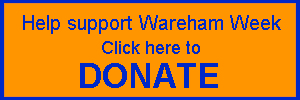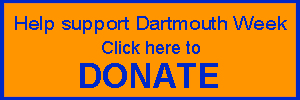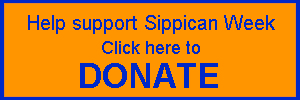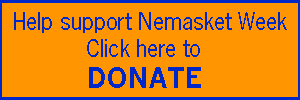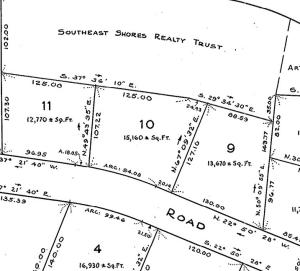School administrators present early math and reading skills compared to students across the country
Wareham Principals and Director of technology, Curriculum and Teaching Tracie Cote assessed how Wareham students in grades kindergarten through tenth compared in math and reading with other students across the country.
The North Western Evaluation Association exam assesses student growth and achievement throughout the course of the school year in schools across the country. The elementary and middle school administer the test three times a year, once in the fall, winter and spring and the high school administers it twice a year, once in the fall and winter.
The test results are broken down into five categories based on percentiles; 1st to 20th percentile, 21st to 40th percentile, 41st to 60th percentile, 61st to 80th percentile and 80th to 100th percentile.
The principals and Cote presented the results to the School Committee Thursday, Oct. 16 for the fall 2025 test which was administered in early September.
In reading, the elementary school tested at or slightly above the national average. The four grade levels placed between the 50th and 57th overall percentile.
In the elementary school, grade three has the highest percentage of students testing into the top two categories in reading with 46% and kindergarten had the lowest with 37%.
Grade four had the highest percentage of students test into the bottom two categories with 40% while grade two had the lowest percentage of students place into the bottom two categories with 29%.
When compared to last fall, the results are similar. The four grade levels placed between the 52nd and 58th overall percentile with kindergarten dropping the most from the 58th percentile in fall 2024 to the 50th in 2025. Grade three saw the biggest increase in the overall percentile, jumping up by four percentage points in 2025.
“You can see there’s definitely some areas of growth in the English language arts component and this is something that we will really try to drive this year,” Elementary School Principal Dan Sylvestre told the committee.
In math, the four grade levels at the elementary school showed growth and were consistently above the national average. The four grade levels tested between the 52nd and 61st overall percentile.
Fifty one percent of second graders tested into the top two categories which was the highest in the elementary school while grade three had the lowest percent of students in the top two categories at 38%.
Grade four had the highest percentage of students tested into the bottom two categories with 31% while grade two had the lowest percentage of students in the bottom two categories with 23%.
Overall the math results show most grade levels are at a similar level to fall 2024 except kindergarten which dropped from scoring in the 65th overall percentile to the 59th.
According to Sylvestre, during the school day students will be grouped into small groups partially based on these scores for additional support.
At the middle school, results were similar across the three grade levels and similar to the national average in reading. Grades five and seven tested into the 53rd percentile and sixth into the 52nd.
Grade five had the highest percentage of students test into the top two categories with 43%, a seven percentage point difference between grade six which had the lowest percentage of students in the top two categories with 36%
Grade seven had the highest percentage of students test into the bottom two categories with 40% and grade six had the lowest with 31%.
Despite 40% of seventh graders testing into the bottom two categories, grade seven saw a significant jump from last year with 41% of students testing into the top two categories compared to 2024’s 30%.
In math, grades six and seven both were just above the national average, testing into the 52nd overall percentile while grade five was just below, testing into the 47th.
Thirty nine percent of sixth graders tested into the top two categories which was the highest in the middle school but only above grade five by three percentage points which had the lowest.
The 39% of seventh graders who tested into the bottom two categories was barely the highest percentage over the fifth grade by one percentage point and the sixth grade by three percentage points.
Compared to last fall, all three grade levels had a higher percentage of students test into the top two categories with fifth grade having the largest jump from 26% in 2024 to 38% in 2025.
Middle school Principal Sara Russo said there is a 50 minute class period every day dedicated to assisting kids partially based on these scores.
“At that time we’ll take our students and work with them on math or English language arts and we also have advanced math during that time for our students that are excelling,” Russo said.
Grades eight, nine and 10 all tested above the national average between the 53rd and 57th overall percentiles. All three grade levels had increases in the percentage of students in the top two categories in reading.
Grade 10 not only had the biggest jump from fall 2024 to fall 2025 but also the highest percentage of students in the top two categories with 48%. Grade eight had the lowest percentage of students in the top two categories with 39%.
Grade eight also had the highest percentage of students place into the bottom two categories at 36% which was three percentage points higher than the ninth grade and seven percentage points higher than tenth.
Grades eight and ten tested above the national average into the 54th overall percentile in math while grade nine tested into the 43rd. Grade eight had the highest percentage of students test into the top two categories with 42%, just two percentage points higher than tenth grade.
Ninth grade saw different results with 50% of students placing in the bottom two categories which was 15 percentage points higher than eighth grade and 14 percentage points higher than tenth.

















